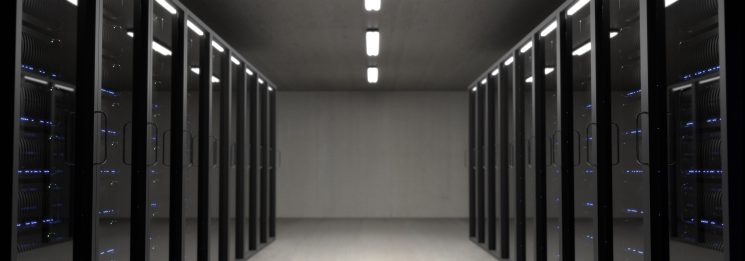As more and more businesses move online, they increasingly look for places to house their servers. They want them to be in safe and secure places, where they won’t have to worry about the cost of power, cooling, and bandwidth. But what about the environmental impact?
In this article, we are going to discuss the advantages of choosing a Green Data Center to help organizations and businesses reduce their operational costs, increase their flexibility, and ensure the integrity of their data with environmental-friendly solutions.
Data Center and Its Components
A data center is a facility that houses computer systems and associated components, such as telecommunications and storage systems.
The most common components of a data center are Racks, Servers, Storage, Networking, Power, Cooling, and Security.
How Does a Green Data Center Work?
A green data center is a type of data center designed and built with energy efficiency in mind. There are many different ways to achieve this efficiency, but most green data centers use some combination of the following strategies:
- Use energy-efficient equipment: One of the most important ways to make a data center more energy efficient is to use equipment designed for efficiency. This includes everything from servers and storage devices to cooling and lighting systems.
- Implement power management: Power management is another key strategy for reducing the energy consumption of a data center. By controlling when and how much power is used, it’s possible to minimize waste and keep overall energy use down.
- Take advantage of green power sources: This uses renewable energy sources, such as solar or wind power. By using clean power, a data center can further reduce its negative environmental impact.
- Improve cooling efficiency: Proper cooling is essential for any data center, but it can also be a major source of energy waste. By improving the efficiency of the cooling system, it’s possible to reduce the amount of energy needed to keep the facility cool.
- Use recycled materials: Finally, using recycled materials in the construction of a data center can also help reduce its overall energy footprint. Using recycled steel, for example, can reduce the embodied energy of the facility by as much as 60%.
By using these and other strategies, it’s possible to build a data center that is much more energy-efficient than a traditional facility. Green data centers can provide significant environmental benefits, as well as cost savings for the organizations that operate them.
8 Advantages of Using a Green Data Center
- Sustainability and Efficiency: Green data centers are designed with sustainability in mind. They incorporate features such as energy-efficient cooling and heating systems, on-site renewable energy generation, and the use of recycled or recyclable materials. All of these help improve sustainability and efficiency and reduce the data center’s carbon footprint and its impact on the environment.
- Reduced Energy Costs: One of the most important benefits of a green data center is the reduction in energy costs. By incorporating energy-efficient systems and on-site renewable energy generation, data centers can significantly reduce their energy consumption – and their energy bills. In some cases, these cost savings can be used to offset the initial investment in the green data center.
- Improved Reliability: Green data centers are designed to be more reliable than traditional data centers. They often incorporate features such as redundant power systems and enhanced cooling systems, which can help improve the data center’s uptime and reduce the risk of downtime.
- Enhanced Security: Green data centers can also offer enhanced security features. For example, many green data centers are designed with security in mind, incorporating features such as physical security barriers and biometric security systems, which can help improve the data center’s security. They are also careful in choosing the most secure browser that automatically blocks trackers and unwanted ads while also providing anti-phishing and anti-malware protection.
- Increased Scalability: Green data centers are often more scalable than traditional data centers. This is because they often use modular construction techniques, which make it easier to add capacity as needed. Additionally, green data centers often use virtualization technologies, which helps improve the data center’s scalability.
- Lower Operating Costs: Green data centers can also help to lower a data center’s operating costs. This is because they often use less energy than traditional data centers, which can help to lower the data center’s energy bills. Additionally, green data centers often use more efficient cooling and heating systems, which can help to reduce the data center’s water consumption.
- Reduced Carbon Footprint: Green data centers can also help reduce a data center’s carbon footprint. This is because they often use less energy than traditional data centers, which can help reduce the data center’s greenhouse gas emissions. Green data centers’ often use of on-site renewable energy generation further reduces the data center’s carbon footprint.
- Reduced e-waste: Since green data centers often use recycled or recyclable materials, they can help reduce the amount of e-waste products sent to landfills. This is important because e-waste is a growing problem globally, and it can harm the environment.
Factors to Consider When Choosing a Green Data Center
There are many factors to consider when choosing a green data center. Businesses should consider factors such as size, power requirements, cooling needs, and security concerns. In addition, some key considerations are:
- Location: The location of the data center can have a significant impact on its energy efficiency. For example, data centers located in cooler climates can reduce their cooling costs by taking advantage of naturally cool temperatures.
- Design: The design of the data center can also impact its energy efficiency. For example, data centers that are designed to allow for natural ventilation can reduce their cooling costs.
- Technology: The type of technology used in the data center can also impact its energy efficiency. For example, data centers that use more energy-efficient servers can reduce their overall energy consumption.
- Management: How the data center is managed can also impact its energy efficiency. For example, data centers that implement energy-efficient management practices can reduce their overall energy consumption.
- Certification: The certification of the data center can also impact its credibility. For example, a data center’s certification from the U.S. Green Building Council is proof enough of being a green data center.
- Cost: The cost of using a green data center will vary depending on the size and location of the facility, as well as the specific capabilities and services offered. Overall, the cost of using a Green Data Center is worth the investment.
By taking these factors into account, organizations can ensure that they select a data center that is best suited for their needs and that can help them save money on their energy costs.
Conclusion
Green data centers can help companies save money on their energy bills, and can also help to reduce a company’s carbon footprint. We also learned that Nordic Data Center is a good choice for companies that want to operate more sustainably.





